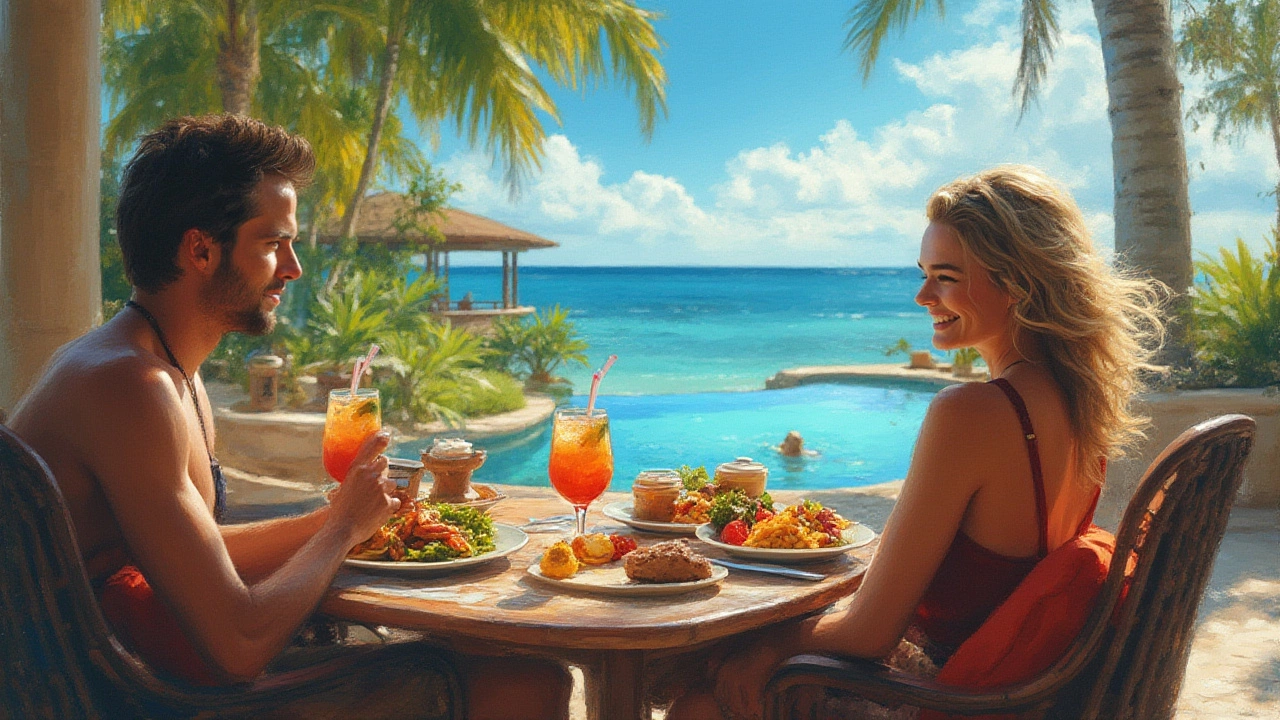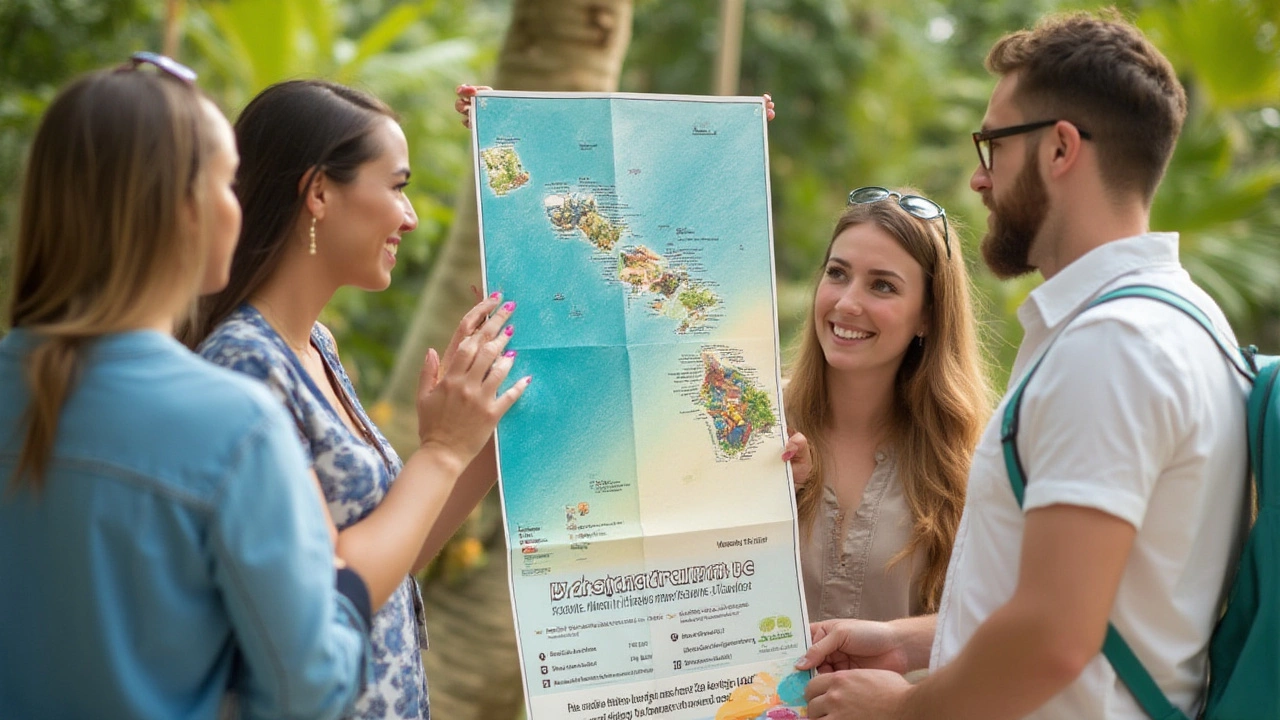It’s easy to dream up a perfect Hawaiian getaway—palm trees, gentle waves, and everything paid for upfront, so you can relax with that extra cocktail (or shave ice). But once you start searching for "all-inclusive resorts in Hawaii," you might notice something weird—not a lot actually pop up. Isn’t Hawaii the ultimate vacation paradise? So why doesn’t it have dozens of all-inclusives like Cancun or Jamaica?
The Reality of All-Inclusive Resorts in Hawaii
Most travelers are surprised to learn that Hawaii doesn’t really play the all-inclusive game like you might find in Mexico or the Caribbean. If you’ve been daydreaming about bottomless buffets, endless mai tais, and spontaneous snorkeling—all wrapped in a neat flat-rate package—here’s where things shift.
The big resorts in Hawaii, like those in Waikiki, Maui, or the Big Island, usually charge you for the room and then add on costs for everything else: meals, drinks, activities, beach rentals, children’s programs, you name it. This isn’t just some quirk. Hawaii’s hospitality industry has grown up differently—they lean into luxury, adventure, and choice. Resorts want visitors to explore, support local restaurants, and seek out one-of-a-kind island experiences. That’s the heart of "aloha spirit"—connection, not confinement.
It’s not that all-inclusive doesn’t exist at all, but it’s super rare here. There are a few places that offer meal-inclusive packages (often targeted to honeymooners), but these usually mean breakfast and dinner, maybe a couple of cocktails or a welcome basket. Full all-you-can-eat-and-drink, plus daily activities and excursions, just isn’t the norm. Outrigger Reef Waikiki Beach, for example, lets you prepay for meal plans; the Travaasa Hana in Maui (now Hana-Maui Resort) sometimes tries out inclusive packages. But they typically fall short of the true "all for one price" Caribbean model.
Why is this? For starters, running a true all-inclusive is expensive on an island where food and supplies often have to be flown in. Hawaiʻi also works hard to protect its environment and culture; mass-tourism models don’t mesh well with the islands’ values or geography. Local businesses want you to dine out, buy from farmers’ markets, and maybe book a surf lesson with someone truly in love with their craft, not just your hotel’s recreation desk. That means more freedom, sure, but also more budgeting and planning.
If you google "all-inclusive Hawaii," you’ll probably see deals for cruises or group tours, but pure resort experiences? Not so much. Even the handful you find will typically spell out what’s not included, and it’s often pretty important stuff—premium drinks, water sports, off-site excursions.
Here’s a quick comparison to make it even clearer:
| Typical All-Inclusive (Caribbean) | Typical Hawaii Resort |
|---|---|
| Room, unlimited meals, drinks, poolside snacks, non-motorized water sports, kids’ club, airport transfers. | Room, access to pools/beach, daily housekeeping. Meals, drinks, most activities are extra. Some offer breakfast packages or spa credits. |

How to Get the Most from Hawaii Resorts—Even Without "All-Inclusive"
If you love vacations where everything’s sorted in advance, Hawaii can still deliver a low-stress experience if you know what to look for. You’re not doomed to a la carte chaos or wallet anxiety—just play things a little differently.
First, look for packages offered directly by resorts on their websites. These sometimes bundle daily breakfast, parking, and sometimes a resort credit for meals or activities. Fairmont Orchid on the Big Island offers "bed and breakfast" deals that include a daily buffet. The Grand Wailea on Maui tosses in spa credits or free nights on longer stays (watch for seasonal promos, especially in fall).
A lot of resorts have “resort fees”—sometimes $30-$60 per day. Annoying? Yes. But these can include stuff like yoga classes, snorkel gear rentals, or Wi-Fi. Always check what’s included, so you’re not surprised at checkout.
For those with a bigger group or families, some hotels provide free breakfast, discounted kids’ meals, or kitchens in-suite. Vacation rentals (apartments, condos, Airbnb, or Vrbo) are booming on the islands, letting you stock up at Costco or Safeway and do at least some meals yourself. This can shave hundreds off your total bill if you’re traveling with picky eaters or folks with dietary needs.
If you’ve got points or status with a big hotel chain, tap it. Hilton, Marriott, and Hyatt all have properties on the islands that reward loyalty with free upgrades, breakfast, or lounge access (which sometimes means afternoon snacks and drinks). Not exactly all-inclusive, but it helps soften those daily costs.
A tip for foodies: resort restaurants can be stunning but pricey, with dinner easily running $50+ per person. Island plate lunch spots, food trucks, and local takeout counters serve fresh, filling meals for a fraction. You’ll experience "real Hawaii"—try poke from a local market or malasadas from a bakery, and your taste buds will thank you. Planning two or three "splurge" dinners and hitting local eats the rest of the time gives you a flavor-packed trip and more spending money for a sunset catamaran sail or a volcano tour.
Drinks are an easy budget drain at Hawaiian hotels. If you have a lanai (balcony), swing by a grocery store for local beer or a bottle of rum and some pineapple juice. Mix up a drink at sunset, soak in the views, and save $15 per round. Plus, it’s legal to have a drink on your balcony, though not on public beaches for the most part (respect the local laws).
If you really want a “set it and forget it” experience? Consider a Hawaii cruise. Norwegian Cruise Line offers week-long inter-island cruises where meals, entertainment, and transportation are bundled in. You miss out on staying at legendary beach resorts, but if your goal is seeing multiple islands without packing and unpacking, this might just be your style.

Common Myths and What You Should Really Expect
There are a handful of myths that pop up around Hawaii vacations. The big one is assuming you’ll find oceanfront, all-you-can-eat-and-play resorts everywhere. Unless you’re getting a special group tour or doing a cruise, that’s just not how the islands roll. Each island has a unique vibe—in Maui and Oʻahu, the big chains dominate, offering points perks but rarely full inclusives. Kauaʻi and the Big Island host a mix of luxe retreats and quieter boutique hotels, but none offer true all-inclusive the way a Cancun megaresort does.
Another myth: “Hawaii is ultra-expensive.” Sure, it can be, especially if you book last minute during summer or winter holidays, or eat every meal at hotel restaurants. Yet with a bit of clever planning, you can soak up all the surf, sunshine, and hula without draining your savings.
One thing to watch for: Service charges and state taxes. Hawaii has high taxes on hotel rooms—up to 18% in some spots when combined with fees—so double-check what your “total” price actually covers. Those endless ocean views aren’t exactly free.
Experiences you can bundle: A lot of resorts, like Aulani (Disney’s resort on Oʻahu), let you pre-book activities like luau nights, spa packages, and character breakfasts. Sometimes, splurging on a few prepaid adventures makes your trip feel more relaxed, even without true all-inclusive options. If you want to build your own “faux” all-inclusive vibe, add-on packages at major resorts often include kids’ club access, beach equipment, or group excursions, so you know more of your budget upfront.
Here’s a fast checklist for planning a smooth Hawaiian escape:
- Research what’s truly included with your resort—meals, activities, gear, and parking.
- Compare direct booking packages with bundle sites like Expedia, but be wary of extra fees.
- Book in advance for best rates and promo offers; prices jump during spring break, Christmas, and Ironman week in Kona.
- Factor in meals out at local spots—plan a food truck lunch and you’ll find unforgettable flavors and savings.
- Consider vacation rentals or suite hotels for kitchen access and more space—perfect for families or longer trips.
- Don’t forget about points programs if you’re a loyalty member with Hilton, Marriott, or Hyatt.
- Remember, a true all-inclusive Hawaii stay is rare—set your expectations for flexibility, flavor, and adventure instead.
From sipping sundown mai tais on your own balcony to hiking lush rainforest valleys, Hawaii wants you to explore, taste, and connect. The islands rarely box you in with an all-in-one deal, but they open doors to things you simply can’t find at package resorts. Embrace the extra planning, ask locals for tips, and let the spirit of aloha lead you somewhere unexpected.